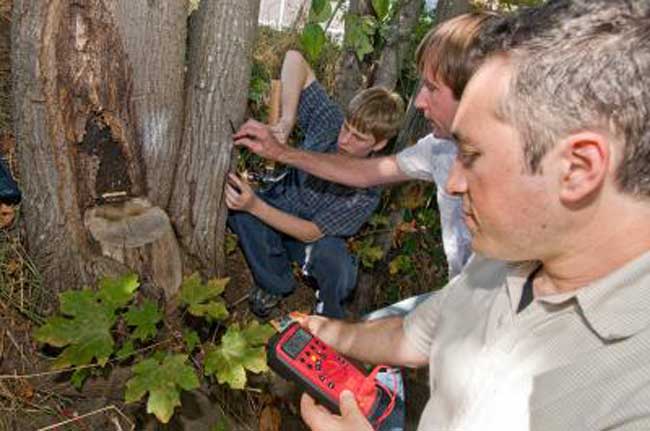Electricity Harvested From Trees

Researchers have figured out a way to plug into the power generated by trees.
Scientists have known for some time that plants can conduct electricity. In fact, researchers at the Massachusetts Institute of Technology found that plants can pack up to 200 millivolts of electrical power. A millivolt is one-thousandth of a volt.
And although the popular potato or lemon battery experiments have shown that an electrical current can be generated by creating a reaction between the food and two different metals, power is harvested from trees through a different mechanism.
"We specifically didn't want to confuse this effect with the potato effect, so we used the same metal for both electrodes," said Babak Parviz, a professor of electrical engineering at Washington University and co-author of the study.
After spending the summer surveying trees, the researchers discovered that big leaf maple trees generated a steady voltage of up to a few hundred millivolts. Powering a circuit, however, required a much higher voltage.
To extract electricity from trees and convert it into useful energy, researchers built a boost converter capable of picking up as little as a 20 millivolt output and storing it to produce a greater output. By hooking it up to a tree using electrodes, the custom-built device was able to generate an output voltage of 1.1 volts, enough to run low-power sensors.
The study will be published in an upcoming issue of the Institute of Electrical and Electronics Engineers' Transactions on Nanotechnology.
Get the world’s most fascinating discoveries delivered straight to your inbox.
While Parviz admits that “tree power” isn’t as practical as, say, solar energy, he thinks the system could be scaled-up as a low-cost option for powering tree sensors that help detect environmental conditions or forest fires. Using the electronic output to keep track of a tree's health is another possibility.
"Normal electronics are not going to run on the types of voltages and currents that we get out of a tree." Parviz said. "As new generations of technology come online, I think it's warranted to look back at what's doable or what's not doable in terms of a power source."
- Video - How to Make a Lemon Battery
- Power of the Future: 10 Ways to Run 21st Century
- Vote: The Best Alternative Energy Idea



